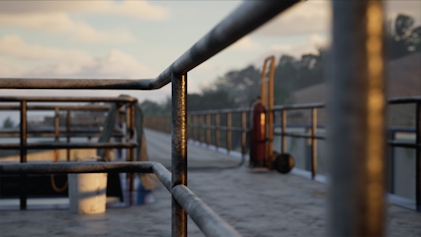In fact, it is much more powerful than that and we thought we’d take a look into the fascinating world of psychological safety.
The true power of psychological safety
A cornerstone of a healthy workplace is the establishment of a feeling of trust, as well as an environment in which we feel confident to speak up and share.
When we trust our colleagues and leaders, we are more likely to express our opinions and share feedback without fear of repercussions. Trust is a foundational element of a psychologically safe and healthy workplace.
→ But beyond that, it will create an environment where taking risks, coming up with ideas, and pushing boundaries will be possible.
Taking risks isn’t always about physical risks; it can also be through sharing ideas or coming up with solutions, no matter how different or “crazy” they may be.
When we feel safe to share our ideas, it can really lead to increased creativity and innovation. People are more willing to think outside the box and propose new solutions when they know they won't face criticism or judgment.
As an organization, fostering a culture of creativity and innovation can lead to solution development both externally and internally, that can promote a sense of belonging and general workplace wellbeing.
And let’s be honest: a creative and innovative workplace can also be so fun!
It really is all connected.
Mental health issues and anxiety are major productivity hurdles. They hinder productivity, lower our sense of belonging, and our engagement and buy-in into the workplace. And it is becoming essential to address this issue.
A psychologically safe environment, full of creativity and that cultivates innovation is the perfect space within which employees can experience a positive impact on mental health. The way trust and empowerment work can lead to an overall sense of well-being.
And in perfect contradiction with the negative outcomes of fear and anxiety, a positive workplace will create the perfect ground for more efficient work and better performance.
Psychological safety is particularly important for promoting diversity and inclusion in the workplace. When employees from different backgrounds and perspectives feel safe, they are more likely to contribute their unique insights and perspectives.
And we know how powerful different points of views and experiences can be, especially in the workplace.
Remember how we talked about open dialogue and a trusting workplace? This is another key positive impact from a workplace that takes steps towards promoting psychological safety.
Indeed, it encourages open dialogue about challenges and problems.
And being open about challenges and issues, when you can count on others’ ideas and have an innovative space to discuss, can lead to more effective problem-solving and decision-making as employees can discuss issues honestly and collaboratively.
In fact, high-performing teams have a heightened sense of psychological safety and the two are linked.
And as much as problems can cripple an organization, collaborative problem-solving can be transformative.
As a whole, it is becoming clear that safety leaders make for great leaders.
Specifically, leaders play a crucial role in creating and maintaining psychological safety; they should set the tone by being approachable, admitting their own mistakes, and encouraging open communication.
Amy Edmondson recognises in her book “the fearless organization” that “hierarchy (or, more specifically, the fear it creates when not handled well) reduces psychological safety.”
However, leaders who lead by example, actively listen, and respond empathetically to their employees contribute to a culture of trust and openness.
And people showing that level of leadership and empathy will be respected and followed; again participating in increased engagement and productivity.
We know how important feedback can be in improving skills, strengthening knowledge, processes, and productivity.
In a psychologically safe workplace, feedback is viewed as a tool for growth, not as a means of criticism. It is empowering.
Employees feel comfortable giving and receiving feedback to help each other improve; they also feel empowered to report errors and near-misses.
And this leads us into the very idea that mistakes are learning opportunities.
“Finding out that you are wrong is even more valuable than being right, because you are learning.” says Amy Edmondson.
It is never easy to recognise our mistakes and even more to own them.
Often, we feel shame, fear, and anxiety when we make mistakes. But they are often an essential step on your learning journey and when you are building skills.
In psychologically safe workplaces, mistakes are not met with blame but are seen as valuable learning opportunities.
And more specifically, feeling safe and empowered to recognise and discuss mistakes or incidents early on can help prevent bigger issues or even risky situations from arising.
Indeed, psychological safety is directly linked to physical safety. In fact, this is probably one of the most profound reasons to build and sustain it.
It can not only encourage employees to take risks, learn from their experiences, and continuously improve, but it can also prevent major incidents or harmful accidents.
Building and sustaining psychological safety
It is important to foster a culture of respect, empathy, and open communication.
Leaders
and employees must work together to establish and maintain an
environment where everyone feels valued, heard, and supported in their
professional growth and mental well-being.
Building and sustaining psychological safety is an ongoing
process that involves training, empowerment, communication, and a
continuous feedback loop.
It is not easy to achieve; but it is essential to put processes in place to create it.
Organizations with high levels of psychological safety tend
to be more innovative, have better employee retention, and perform
better overall.
In fact, companies with increased processes and support
around mental health, burnout and who actively work to reduce toxic work
environments are some of the key considerations for many Gen Z and Millennials when it comes to choosing or staying where to work.
It has to be one of the core considerations within a
workplace as well an integral part of any safety training solution. And
creating a culture of safety will require periodic assessments and
adjustments.
It’s an on-going process and it’s always a work in
progress. But it is one fascinating part of safety considerations in the
workplace overall.
Psychological safety and high risk industries
We touched on the idea that psychological safety and physical safety were interconnected;
A culture of trust and open communication can drive
employees to take safety protocols seriously, leading to better
compliance and adherence to safety procedures.
It is also evident that feeling safe and empowered to report incidents is key in preventing serious incidents and harm.



